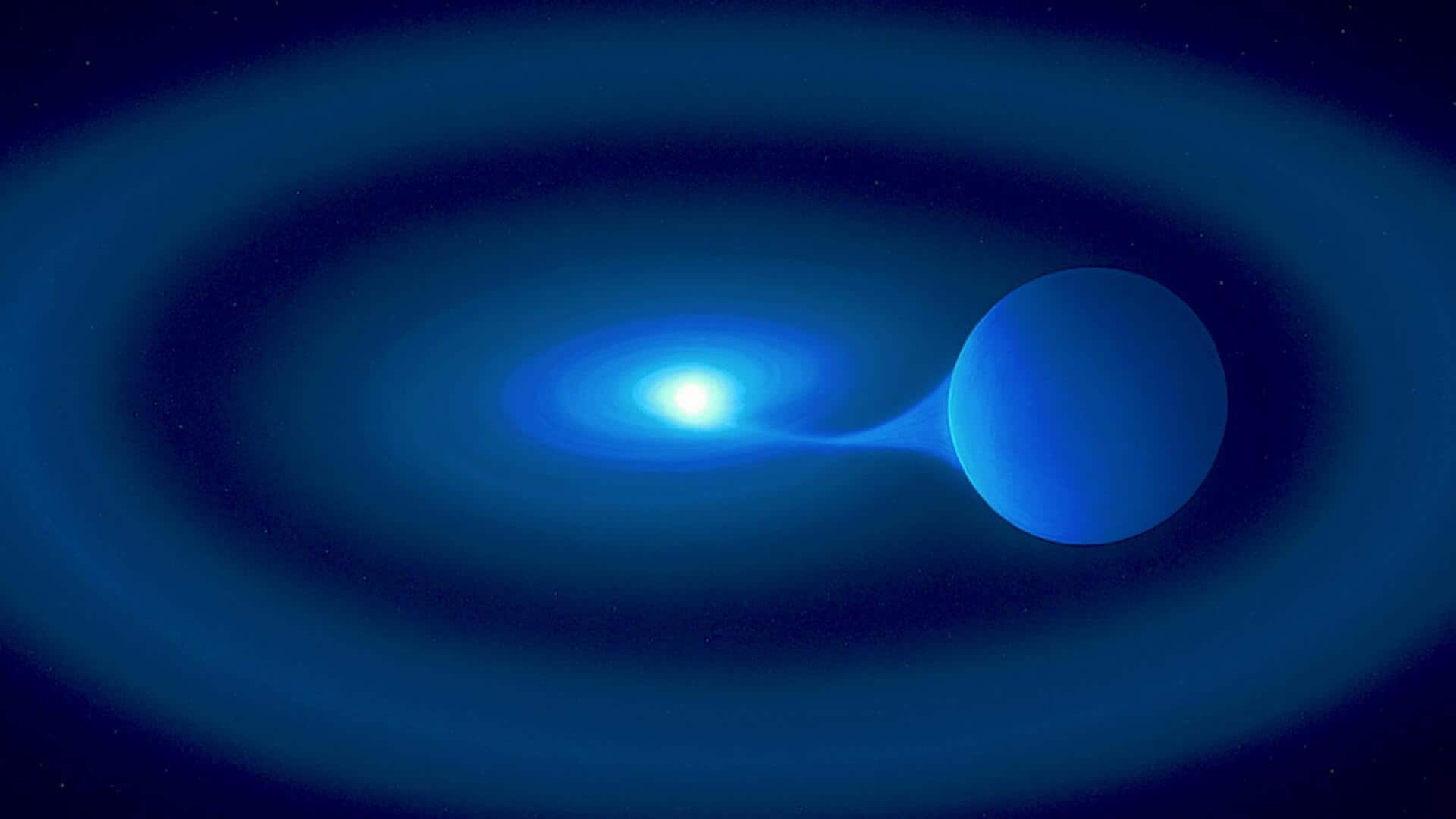
This star is consuming its twin at an unprecedented rate
What's the story
Astronomers have discovered a white dwarf star, V Sagittae, that is devouring its larger companion at an unprecedented rate. The phenomenon was observed by an international team of scientists led by Dr. Pasi Hakala from the University of Turku in Finland, and Professor Phil Charles from the University of Southampton. Their research will be published in the Monthly Notices of the Royal Astronomical Society.
Interaction
Stars are in a unique orbit
The two stars, V Sagittae and its companion, are in a unique orbit where they circle each other every 12.3 hours. This orbital dance is slowly bringing them closer together. The researchers believe this could lead to a supernova explosion so bright it would be visible from Earth, even at a distance of some 10,000 light-years away.
Mystery
White dwarf consuming its companion
Professor Charles explained that the extreme brightness of V Sagittae is due to the white dwarf consuming its companion star. The accreted matter fuels a thermonuclear reaction on the surface of the white dwarf, making it shine brightly in the night sky. This process has puzzled astronomers for over a century since V Sagittae was first discovered in 1902.
Halo
Researchers discover gas ring surrounding both stars
The researchers also discovered a gas ring, or a massive halo, surrounding both stars. This was found using the European Southern Observatory's Very Large Telescope in Chile. The ring is a byproduct of the enormous energy produced by the white dwarf's consumption of its companion. Dr. Hakala said this finding could change our understanding of stellar life cycles and deaths.
Stellar fate
Outburst could happen in coming years
Dr. Rodriguez-Gil from Spain's Instituto de Astrofisica de Canarias, said the matter accumulating on the white dwarf could trigger a nova outburst in the coming years. This would make V Sagittae visible to the naked eye. When these two stars eventually collide and explode, it would be a supernova explosion so bright that it would be visible even during daytime on Earth.